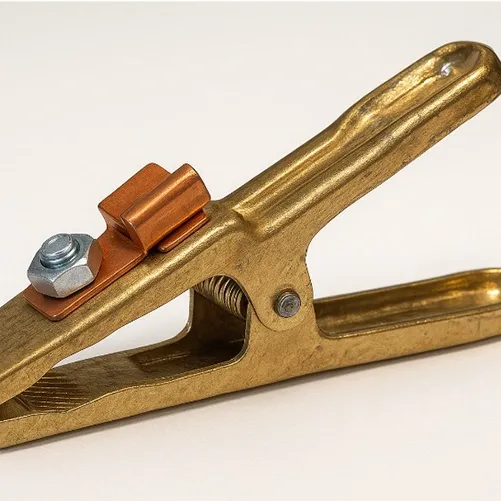Welding Chassis Pliers
Welding chassis pliers ensure proper transmission of electric current. The completion of the circuit allows the welding process to proceed in a stable manner. This equipment is a crucial connection component for performing welding operations safely and efficiently.
Welding chassis pliers are particularly used in welding equipment operating under heavy industrial conditions. Therefore, they must have a solid contact surface and a durable structure to prevent performance loss. A good plier prevents electrical instabilities during welding. This increases work safety and ensures consistent results in the long term.
What Are Welding Chassis Pliers Used For?
Ensuring a safe flow of electricity during welding operations is essential for achieving quality results. Welding chassis pliers help complete the welding circuit thanks to their conductivity and firm grip.
Using the correct plier enhances welding quality and maximizes user safety. Especially in industrial applications, chassis pliers stand out as a critical component for completing the welding circuit.
The chassis connection allows the electrical current to pass onto the surface to be welded. If not properly secured, defects in the weld seam and energy losses may occur. For welding systems operating under high current, specially designed plier models should be preferred. Plier types with a 200-amp capacity provide high performance and durability, ensuring long-term use.

Main benefits of using welding chassis tools:
Choosing the right plier is of great importance for a smooth welding process. Welding pliers prices vary depending on the product’s amperage capacity, material quality, and connection system. High-quality plier models prioritize durability and reliability, catering to both professional and amateur users.
The durability of connection equipment used in industrial welding processes directly affects operation safety as well as production efficiency. High-quality connection elements with high current carrying capacity maintain their function without performance loss during extended use.
These types of equipment offer ease of use thanks to their ergonomic designs and provide reliable results even under harsh working conditions.
Where Are Welding Chassis Pliers Connected?
The chassis connection tool is fixed onto a conductive surface to safely complete the electrical circuit. It is usually attached directly to a bare, unpainted, and rust-free part of the piece to be welded. This contact is crucial for ensuring proper current flow and improving arc stability.
When selecting the connection point, the surface’s conductivity and the contact area between the plier and the surface must be considered. A plier clamped to narrow or coated surfaces may create resistance in the current, which can cause fluctuations during welding. Therefore, the plier must be firmly attached and should not loosen during operation.
In practice, the plier is usually connected to metal plates on the welding table or directly to the edge of the workpiece. This completes the system’s grounding and allows the welding process to begin safely. Additionally, sanding the surface before connection can enhance current transmission and contribute positively to welding quality.

Frequently Asked Questions
When selecting a plier, consider the current capacity, material quality, and the sturdiness of the connection mechanism. Choose models with an amperage rating that suits your intended use.
A faulty or disconnected plier disrupts the electric current flow. This lowers welding quality and may damage the device.
Yes. The surface of the plier should be checked regularly and cleaned of dirt, rust, or oil that may reduce conductivity. A clean plier ensures a more stable arc.
If the plier slips or the connection breaks, the welding process abruptly stops, and the electric current cannot complete the circuit. This leads to surface defects and unstable arc formation.
No. The attachment point depends on the structure of the workpiece. However, in all cases, a clean and conductive surface must be selected.
Yes. For operations above 200 amps, more durable models designed for this current should be used. Otherwise, overheating and deformation may occur.
For consistent quality in industrial welding applications, you can contact Eko Kaynak.

